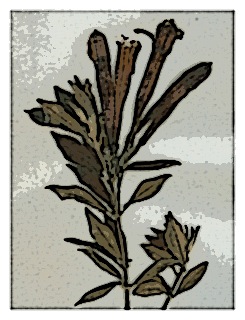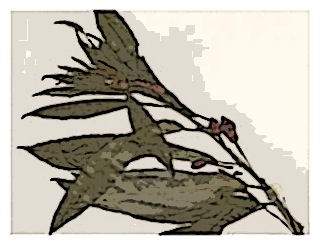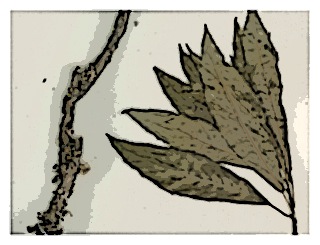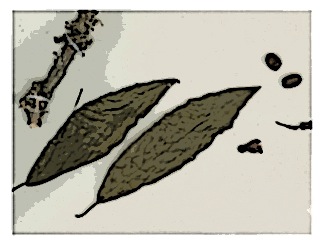
The Genus Fuchsia
Section Pachyrrhiza
(one species)
Both the section, and the single species within it, bear the same name, derived from a Greek term meaning "thick footed". It refers to the characteristically thickened and tuberous roots of the species.
Name: Fuchsia sect. Pachyrrhiza P.E.Berry & B.A.Stein, 1988.
Typus: F. pachyrrhiza P.E.Berry & B.A.Stein.
Section Pachyrrhiza
(one species)
Both the section, and the single species within it, bear the same name, derived from a Greek term meaning "thick footed". It refers to the characteristically thickened and tuberous roots of the species.
Name: Fuchsia sect. Pachyrrhiza P.E.Berry & B.A.Stein, 1988.
Typus: F. pachyrrhiza P.E.Berry & B.A.Stein.

F. pachyrrhiza P.E.Berry & R.A.Stein.
Peru. Known from only two locations on the western slopes of the Peruvian Andes: Near Contumaza in Cajamarca Department and near Cochabamba in Ancash Department from 2,450 to 2,900 meters in elevation (Berry et al. 1988).
Habit—Erect to scandent shrubs one to two meters high. Branches arching to divergent with reddish-brown, exfoliating bark; young stems pilose with hairs 0.3 to 0.5 mm long. Roots tuberous with large clusters present at base of the stem, individual segments irregularly ovoid to clavate, to 16 cm long and 5.5 cm in diameter.
Leaves—Deciduous in the dry season, mostly alternate, occasionally opposite or ternate,

Flowers—Solitary in upper leafaxils, pendant and secund, pedicels 19 to 44 mm long, ovary oblong, pilose, light red, 5 to 7 mm long, 1.5 to 3 mm in diameter, floral tube suburceolate, 6.5 to 7.5 mm long from top of ovary to point of petal and stamen insertion, 4 to 5 mm in diameter and quadrilobed at the base, narrowed to 3.5 mm in diameter in the middle, about 4.5 mm in diameter at the rim, sparsely pilose outside, glabrous within, nectary a ring about 1 mm high, surrounding and tightly appressed to the base of the style, with four stout ridges extending up along the floral tube and tapering towards the rim, sepals triangular, spreading at anthesis, 9 to 11 mm long, connate at base for 2 to 3 mm, 3 mm wide at the base of the lobes. Tube and sepals red to orange-red, petals maroon, suborbicular, erect, slightly convolute, 5 to 6.5 mm long, 4.5 to 5.5 mm wide, stamens in two series, the antisepalous stamens erect and exserted above the floral tube, with filaments 1 to 1.5 mm long,

Fruit—The berry is oblong, 15 to 20 mm long, 10 to 12 mm in diameter, and deep maroon.

Chromosomes: Gametic chromosome number n = 11.
Authors—Berry & Stein 1988.
Original publication—Syst. Bot. 13: 484 1988.
Synonyms—None.
Herbarium Specimens—California Academy; Field Museum; Kew; New York; Paris; Smithsonian; Texas.
